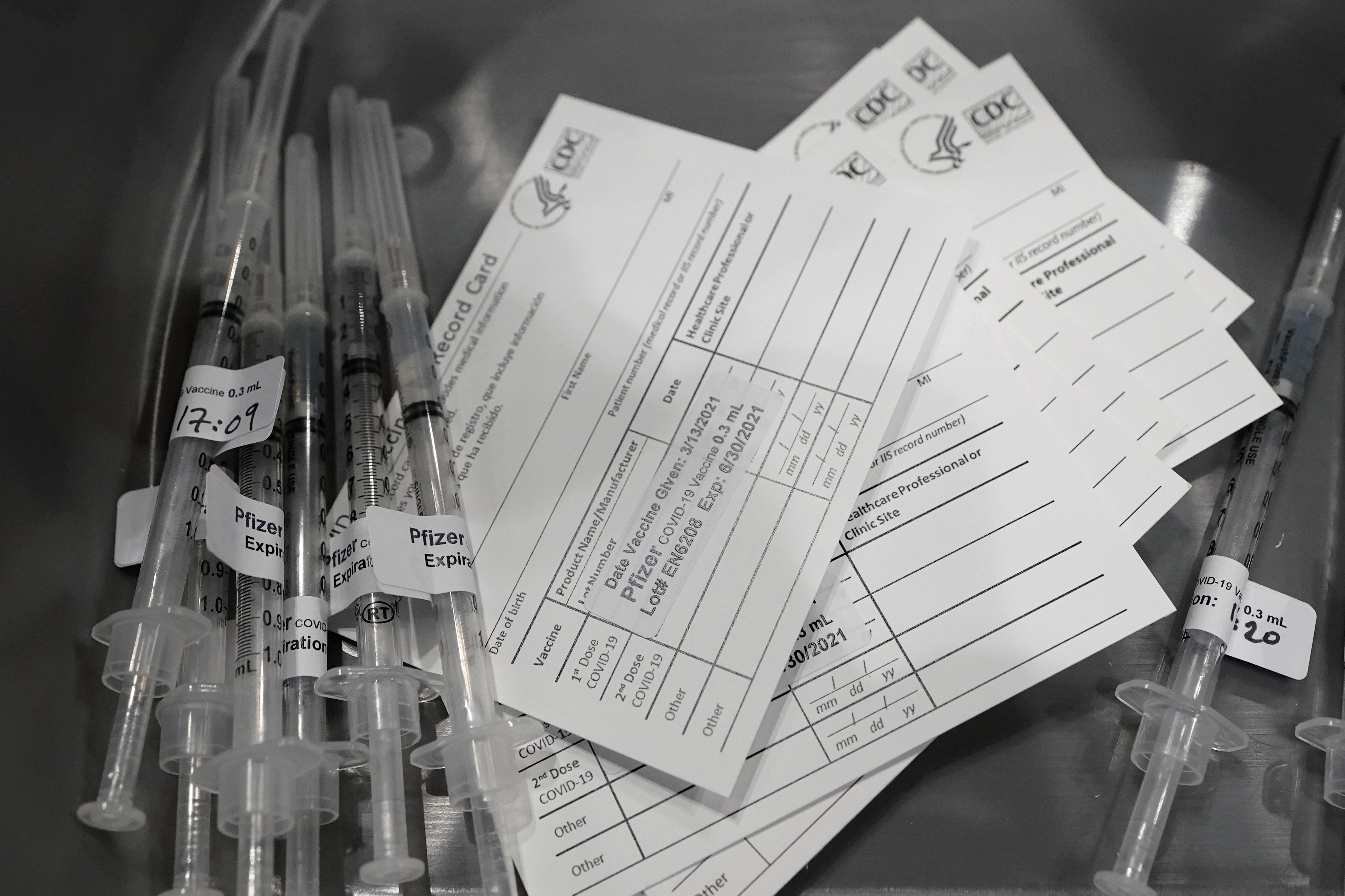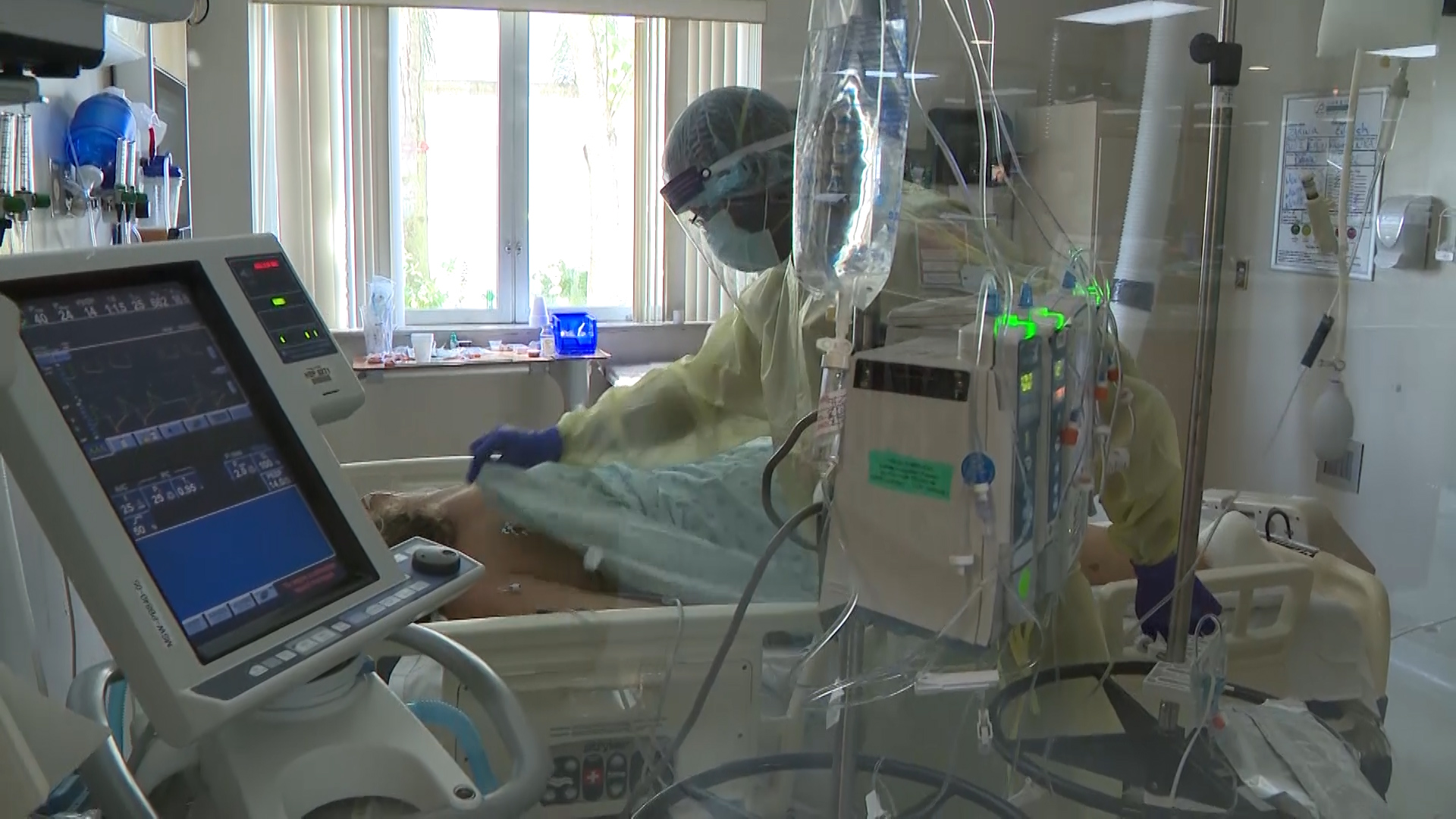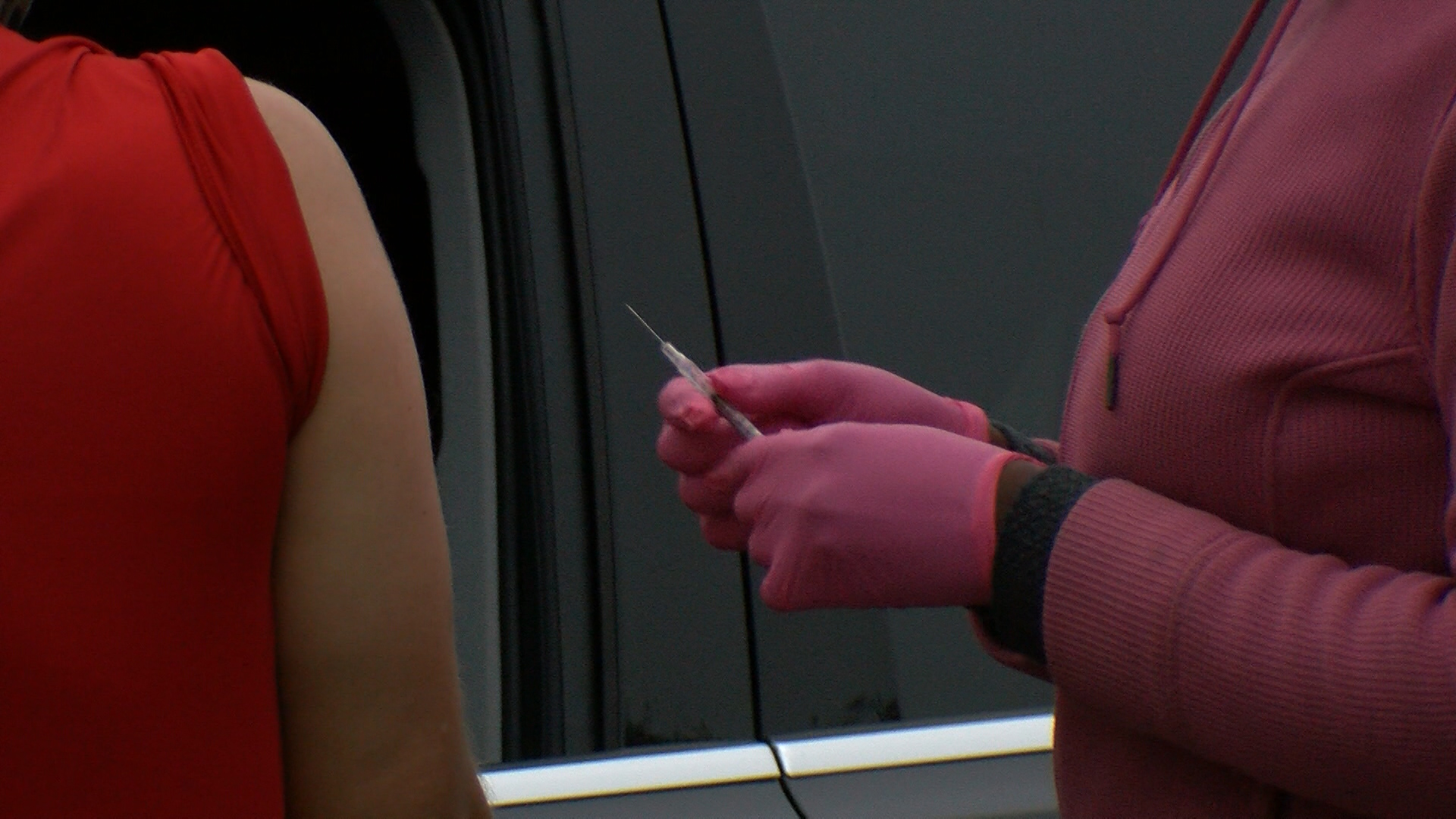TAMPA, Fla. (WFLA) — A full-page ad in the New York Times, signed by more than 200 children’s hospitals including some in Florida, begging for people to take COVID-19 and its effects more seriously lead Rep. Kathy Castor (D-FL) to hold a roundtable discussion with Tampa doctors.
“What spurred me on this morning was the fact that for many years I’ve worked hand in hand with many of America’s hospitals, particularly St. Joseph’s Children’s hospital here that is one of the premiere health centers for children with complex medical needs in the country,” Castor said. “We also benefit in the Tampa Bay area from Johns Hopkins All Children’s and have the top leading children’s hospitals right here in Florida, Jacksonville, Orlando and Miami.”
The Congresswoman said the ad got her attention because hospitalizations are up. At the same time, Florida’s educators, communities and state leaders are fighting amongst themselves over how to protect children while preserving educational norms and retaining parental rights.
“America’s children’s hospitals are under an unprecedented strain, and I was shocked to see this full page ad that included a plea from St. Joseph’s Children’s Hospitals, Johns Hopkins All Children’s, and all of the other children’s hospitals in our state,” Castor said. “Pediatric hospitals are at or near capacity and they expect to see more child patients as schools continue to open across the country. Other complicating factors include they’re seeing more children with serious mental and behavioral health issues in part because of the social isolation they experienced last year and the general devastation brought by the pandemic.”
Castor read from the letter, published in the New York Times as a full page ad by the Nation’s Children’s Hospitals.
“Children’s hospitals are on the frontline of care for kids, anchoring the pediatric safety net for the most vulnerable among us. Tragically, rising numbers of COVID-19 infections among children, surging cases of respiratory illnesses such as RSV, and the pandemic’s ongoing impact on mental health are pushing our children’s hospitals to capacity. Combined with significant hospital workforce shortages, the pediatric safety net for all children is being threatened in unprecedented ways.”
Part of the letter by children’s hospitals printed in the New York Times, read aloud by U.S. Rep. Kathy Castor, D-Fla
Dr. Jason Salemi an epidemiologist and an Associate Professor at the University of South Florida presented a brief analysis of recent COVID-19 data and reviewed weekly COVID cases in Florida, showing the different spikes over time since the start of the pandemic.
The spikes on the chart show peaks in the summer of 2020, the winter of 2020, and now the summer of 2021.
At the height of summer 2020, Salemi’s data showed weekly cases at 81,601. The net peak was 102,312 in the Winter of 2020. Now during the delta variant’s ongoing surge, weekly cases were recorded at 151,749 in the latest full week, from Aug. 20 to Aug. 26.
The Florida Department of Health’s data reported similar findings in its latest publication, which was online on Aug. 27 at the DOH website for COVID-19 information. Their total of reported new cases in the same time frame, from Aug. 20 to Aug. 26 showed 151,749 cases, too.
Data totaled from daily updates at the COVID-19 website run by the U.S. Centers for Disease Control and Prevention showed similar, but slightly higher numbers for the same dates, reporting 151,933 cases from Aug. 20 to Aug. 26.
Daily case numbers are reported by Florida DOH to the CDC every day. Gov. Ron DeSantis has said that he would consider returning to daily publications in Florida, but later changed his mind, saying that the state was already reporting daily by having the numbers sent to the CDC for publication.
Additionally, the CDC data shows that the whole country is at a high rate of community transmission in every state, including all 67 of Florida’s counties.
Differences aside, the data from the CDC and DOH show that case numbers are remaining high in Florida, both daily and weekly.
“What’s been nice is just in the past couple of weeks we’ve finally started to plateau,” Salemi said. “Unfortunately, it’s stopping at a very high level where we’re still experiencing over 20,000 cases each day,” Salemi said.
Going into weekly trends, Salemi broke down the rise and fall by age groups.
“We’re actually starting to see a decrease in the number of daily cases in all adult age groups,” Salemi said. “It’s wonderful to hear that we have 7% fewer cases in the most recent weekly report compared to two weeks prior.”
According to Salemi’s data, percentages of case positivity changes by age group were:
- 20-29: 22% down
- 30-39: 11% down
- 40-49: 12% down
- 50-59: 13% down
- 60-64: 13% down
- 65+: 7% down
“The unfortunate part of all of this is that the two age groups that have seen pronounced increases in the past two weeks has been our two youngest age groups,” Salemi said. “The 12- to 19-year-old group, and then of course the age group younger than 12 who cannot be protected by a COVID-19 vaccine.”
Salemi’s data shows that children younger than 12 have shown a COVID case increase of 58%, while 12 to 19-year-olds have seen 45% more COVID-19 cases in Florida. With students going back to in-person schooling, Salemi said this should not be a surprise.
Hospitalizations on the rise, CDC report shows
Salemi says there’s been a “pronounced increase in hospitalizations” across multiple age groups. Focusing on pediatric cases, there has been a 10-fold increase of children hospitalized with COVID. He said roughly nine weeks ago, six children were hospitalized per day across Florida.
Now the number has grown to 66 child hospitalizations per day, according to Salemi. The CDC reports a similar number, though their own count is a little higher, at 68 hospitalizations per day among patients 17-years-old and younger, as of Aug. 31.

In the most recent seven day period reported, from Aug. 18 to Aug. 24, 15.6% more hospitalizations occurred for those 0 to 17-years -old.
“The unfortunate thing is, as I’m sure everyone is starting to pay attention to, is we saw record numbers of cases, record numbers of hospitalizations, even in the older age groups, and despite the vaccine, but we weren’t seeing those deaths increase until recently.”
From Salemi’s presentation, the data showed 228 deaths per day in the previous summer surge and 201 per day during the winter surge in 2020. Now, data shows 221 per day currently amid the delta surge. Salemi said he expects the number of deaths per day to rise above the summer 2020 surge.
As the number of hospitalizations and cases rise and the death toll grows, the effects of COVID-19 on children is still a concern, despite lower mortality numbers in pediatric cases.
“One of the things I wanna stress is that although we have seen a tremendous increase of pediatric admissions to the hospital, in general, kids still have a less complicated course and death rates remain low,” Dr. Christina Canody, Pediatric Service Line Medical Director with BayCare said. “That being said, the pediatric population in the hospital still makes up 1.5-2% of those patients, and because the adult numbers are so high, we see that as well in the pediatric population.”
“We have seen a little bit of an increase in severity and what makes it a little bit more difficult to navigate is traditionally a lot of our pediatric staff were transitioned into taking care of adults because there were so many adult COVID patients in the hospital, but we have seen those numbers go up as well.”
Canody said hospital admissions tripled at Baycare Hospitals in August, the highest month by far. She said there were 180 pediatric admissions to Baycare facilities, and most were at St. Joseph’s Children’s Hospital. They’ve also seen an uptick in our emergency room visits, but there is still capacity generally. Still, the strain on staff comes from the increase in adult admissions, according to Canody.
A perfect storm as the school year began
It was a “perfect storm” as the school year opened, Canody said. “Last year when we opened, we had mask mandate requirements, we had some of the lowest rates of infectivity, positivity and prevalence that we had seen during the pandemic, but this year we were at absolute opposite ends of the spectrum,” compared to last year’s infection prevalence and positivity rates, with a large number of children impacted.
“I know there are many media reports out there right now about health care workers that are exhausted and I feel that in Florida we had the benefit of not seeing our peak surge to date until this point in the pandemic simply because in other parts of the country, they weren’t prepared for that kind of surge, especially in New England, during the early parts of the pandemic,” Canody said. “We were able to mobilize, get resources in place, have ventilators in place…have the staff to deal with it, in addition to being able to pull in the community and the pull in of resources and have a wonderful team-member strategy within our health system, where people could assist wherever needed.”
She said that included members of executive staff and leadership team members helping with patient care. Another difference with COVID-19 is preparedness in terms of the scale.
“Most pandemics last on average about three years,” Canody said. “This is truly our first pandemic in a first world of the modern era that we’ve been dealing with.”
Canody urged people to get vaccinated, wear masks, and practice good hand hygiene to help reduce spread, and to make sure children are washing their hands and keeping their hands to themselves. She said that earlier strains of the virus had the loss of taste and smell, but delta variant is different. The majority of her patients come in with scratchy throats, congestion, a low-grade fever.
The patients are surprised when they test positive for the coronavirus, Canody said. Both Canody and Salemi said the cases are rising, and it’s impacting Florida’s children and schools.
How delta changed the game for schools & communities
“This is very different than anything we had last year. The delta variant has made this a game changer in terms of its transmissibility, and even with the data that I presented at the beginning of this, we’re seeing that children are making up more and more, a higher percentage of all cases,” Salemi said. “And we’re seeing the cases and the hospitalizations go up because community spread has been so high in all age groups, and of course now you bring children back into the school setting again, it’s very different from what happened.”
Canody focused on the impact on school children and what the virus means for them after the pandemic is over, while weighing those issues with caring for the children while they’re ill. She says the virus has an impact on more than the physical symptoms of COVID-19.
“What I can say is, I would love for you to put us out of business as a hospital and not have to take care of sick kids. If you ever talk to a parent who has their child hospitalized for any illness, it is a major time of stress in that family, and it is not something anybody wants to go through,” Canody said. “So we would much rather have everybody stay healthy, but especially at this time when we’ve seen incredible resurgence of RSV and a lot of other viruses that were pretty much put to sleep during the 2020 school year. It’s been a very desperate time for a lot of families, and we’ve seen increased hospitalizations across the board.”
Recovery & response as pandemic continues
Canody and Salemi both weighed in on the number of child patients, and what that means as the COVID-19 pandemic continues.
“So I understand that kids do well with this, and most recover, but still, we do have a lot of children being admitted to the hospital and when you’re going from a handful a week or a handful a day to having several hundred within a whole month, that’s a lot of patients that are going through this experience, missing school days, recovery time, high economic hardship for the family,” Canody said. “There are so many aspects to it, so we get that children still make up a small proportion of this, but I think you can’t just measure it based on their illness. You have to base it on the complete cost of this to the family and those around them.”
A renewed push for vaccinations has led to more than 13 million Floridians now having received at least one dose of a COVID-19 shot, but case surges continue.
“I recently got asked by a reporter, how in the world is it that you can say that we’re probably going to exceed the all-time death total for COVID-19 when so many people have been vaccinated in Florida, how is that possible? And it’s not looking at proportions, it’s looking at the absolute numbers,” Salemi said. His data presentation showed that in Florida, “…we are shifting the age distribution of hospitalizations and deaths’ toward younger people which, again from a survivability standpoint, that’s a good thing, but we still for every single age group have more people hospitalized during the delta surge.”
According to the data Salemi is seeing, from every age group, “80-plus-year-old all the way down to pediatric population,” more people are still ending up in the hospital for COVID-19 treatment. Salemi thinks people have gotten numb to it over the course of the pandemic, despite how serious the virus is.
“I think we’ve almost become desensitized to ‘well you’re just going to the hospital,’ and then you go home, you don’t die. If you have to be hospitalized for something, it’s very serious,” Salemi said. “So when we’re seeing record numbers of people hospitalized, we’re going to see record numbers of mortality. So again, whether you talk proportionally about what percentage does the pediatric population make up, that’s not what’s important to me. It’s if we can prevent children from being hospitalized, why not take every opportunity to do that?”
Salemi said everyone agrees that the priority is getting kids back in schools and learning in person, but said they should show goal through their actions.
“At best, schools are going to be a mirror for what’s happening in our communities,” Salemi said. “So the extent to which we can continue to take responsible action and bring community spread of this virus down, the more safe our children will be when they’re going back in the school setting.”
As the pandemic continues, Castor wants Florida’s governor to listen to the experts to protect the state’s children.
“I would urge Gov. DeSantis to stop downplaying the important public health protocols that protect everyone, but especially our kids as they go back to school. He really should listen to the pediatricians of the world, the American Academy of Pediatrics, now listen to America’s children’s hospitals, some of the best right here in the Tampa Bay area, especially St. Joseph’s Children’s Hospital where they’re saying masks are very important,” Castor said. “Being in school is vitally important, we’ve learned that, but what I’ve heard from the experts is going back to school needs to be coupled with those important public health protocols…this is a critical time, where it’s an all hands on deck moment for all of us to listen to our public health professionals and pediatricians, I don’t think it’s that hard.”










